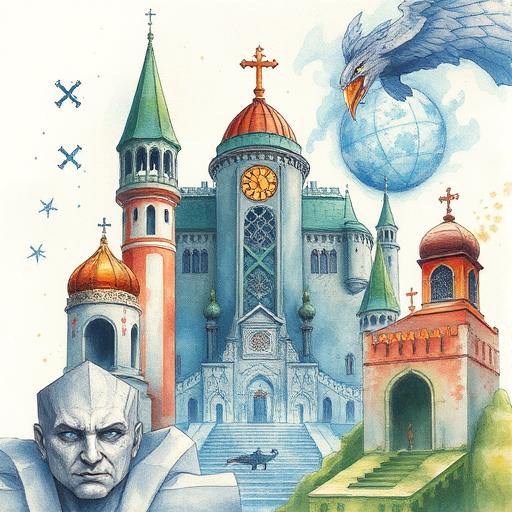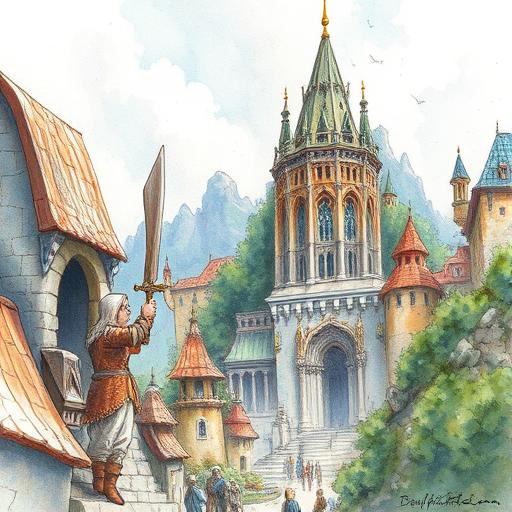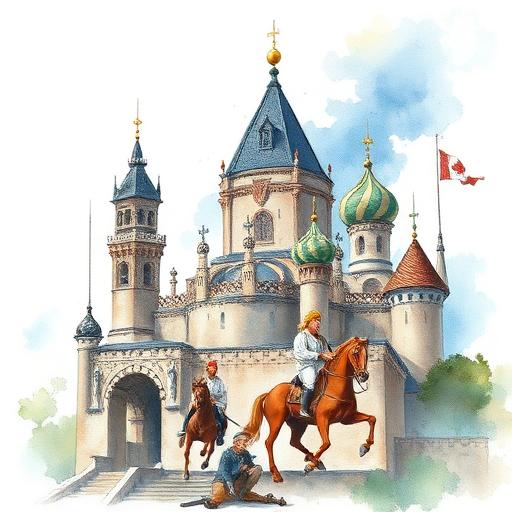Developing Coherent Magical Systems with Scientific and Historical Inspirations
Learn how to craft magical systems that are both immersive and believable by drawing inspiration from scientific principles and historical events, and discover how to integrate these elements into your worldbuilding. This article provides a comprehensive guide to creating coherent magical systems that will elevate your fantasy worldbuilding.

Introduction to Magical Systems
When building a fantasy world, a well-crafted magical system is essential for creating an immersive experience. A coherent magical system can make your world feel more real and engaging, while a poorly designed one can pull readers out of the story. To develop a magical system that is both believable and compelling, consider drawing inspiration from scientific principles and historical events.
For example, the concept of magic in your world could be based on the principles of thermodynamics, where magic is fueled by a limited resource that must be conserved. Alternatively, you could draw inspiration from historical events, such as the use of astrology in ancient cultures to inform magical practices.
Scientific Inspirations
Scientific principles can provide a rich source of inspiration for magical systems. By understanding the fundamental laws of physics, chemistry, and biology, you can create a magical system that feels grounded and realistic. Consider the following scientific concepts as potential inspirations for your magical system:
- Thermodynamics: magic as a form of energy that must be conserved
- Quantum mechanics: magic as a probability-based phenomenon
- Ecology: magic as a force that interacts with and affects the natural world
For instance, the Allomancy system in Brandon Sanderson's Mistborn series is based on a detailed understanding of chemistry and physics. This approach creates a sense of consistency and logic within the magical system, making it feel more immersive and believable.
Historical Inspirations
Historical events and cultural practices can also provide valuable inspiration for magical systems. By studying the myths, legends, and folklore of different cultures, you can gain insight into the symbolic and metaphorical significance of magical practices. Consider the following historical events and cultural practices as potential inspirations for your magical system:
- Alchemy: the pursuit of transforming base metals into gold and the quest for spiritual enlightenment
- Astrology: the use of celestial bodies to inform magical practices and predict future events
- Shamanism: the use of rituals and ceremonies to communicate with spirits and access other realms
To learn more about blending historical and mythological elements to create unique fantasy worlds, check out our article on blending historical and mythological elements.
Integrating Scientific and Historical Inspirations
To create a coherent magical system, you must integrate your scientific and historical inspirations in a way that feels consistent and logical. Consider the following tips for integrating these elements:
- Establish clear rules and limitations for your magical system
- Develop a detailed understanding of how magic interacts with the natural world
- Use magical practices and rituals to reveal character traits and cultural values
For example, in the Harry Potter series, J.K. Rowling uses magical practices and rituals to reveal the values and prejudices of different characters and cultures. This approach creates a sense of depth and richness within the magical system, making it feel more immersive and engaging.
Case Studies
Let's examine a few case studies of magical systems that successfully integrate scientific and historical inspirations. The following table highlights the key features of each system:
| Magical System | Scientific Inspiration | Historical Inspiration |
|---|---|---|
| Mistborn (Allomancy) | Chemistry, physics | Alchemy, mythology |
| Harry Potter (Magic) | Biology, ecology | Folklore, mythology |
| Fullmetal Alchemist (Alchemy) | Chemistry, physics | Alchemy, folklore |
Each of these magical systems draws inspiration from scientific principles and historical events to create a unique and compelling world. By studying these examples, you can gain insight into how to integrate scientific and historical inspirations into your own magical system.
Conclusion
Developing a coherent magical system is essential for creating an immersive fantasy world. By drawing inspiration from scientific principles and historical events, you can create a magical system that feels grounded, realistic, and compelling. To learn more about developing nuanced magical systems, check out our article on developing nuanced magical systems for immersive worldbuilding experiences.
Remember, the key to creating a believable magical system is to establish clear rules and limitations, develop a detailed understanding of how magic interacts with the natural world, and use magical practices and rituals to reveal character traits and cultural values. With these tips and inspirations, you can craft a magical system that will elevate your fantasy worldbuilding and engage your readers.
Comments
Comments are hidden to save bandwidth. Load them when you want to read or leave one.







